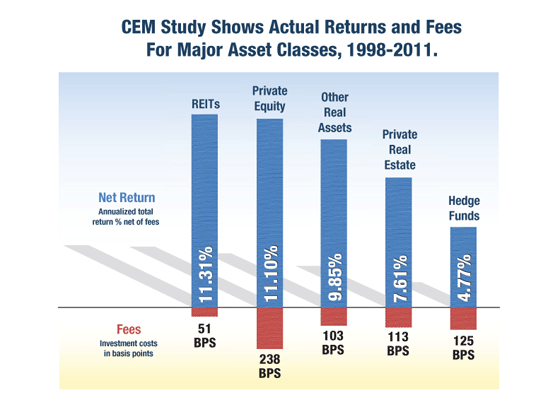 Charles D. Ellis wrote a thoughtful article in the Financial Analysts Journal recently about the hard choices that people– and institutions – must face sooner than later regarding retirement and pension systems.
Charles D. Ellis wrote a thoughtful article in the Financial Analysts Journal recently about the hard choices that people– and institutions – must face sooner than later regarding retirement and pension systems.
One of the main facets of the article’s thesis:
We need to make hard choices on how much to save, how long to work, how to invest, and how much to draw from our savings for spending in retirement.
The article is full of great discussion on these points. After someone stops working, a big part of their financial security stems from controlling costs – not just living expenses, but investment expenses, as well.
From the article:
Most investors somehow believe that fees for investment management are low. Fees are not low. Here’s why: By convention, fees are shown as a percentage of the assets, say, just 1%. But that’s seriously misleading. The investor already has the assets, so the manager’s fee should be stated as a percentage of the benefit (i.e., returns).
If returns are 7%, then the same fee in dollars is 15% of returns. And because index funds deliver the full market return with no more than the market level of risk for a fee of 0.1%, the real cost of active management is the incremental cost as a percentage of the incremental benefit of active management. That’s why the true cost of active management is not 1% or even 15%. Because the average active manager falls short of his chosen benchmark, the average fee is more than 100% of the true net benefit.
Increasingly, investors are learning that one way to reduce costs—and increase returns—is to save on costs by using low-cost index investments, particularly with their 401(k) or other retirement plans.
How your retirement funds are invested is important because many of those dollars are invested for a very long time—20, 40, even 60 years.
The article, titled “Hard Choices: Where We Are”, is available for free from the Financial Analysts Journal.
Photo by 401kcalculator.org

